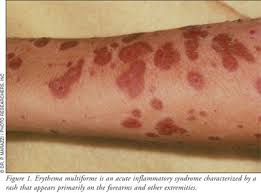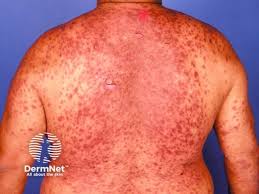
 Severe cutaneous adverse reactions (SCARs), which include Stevens–Johnson syndrome and toxic epidermal necrolysis, drug reaction with eosinophilia and systemic symptoms with acute generalized exanthematous pustulosis, and generalized bullous fixed drug eruption, are life-threatening conditions.
Severe cutaneous adverse reactions (SCARs), which include Stevens–Johnson syndrome and toxic epidermal necrolysis, drug reaction with eosinophilia and systemic symptoms with acute generalized exanthematous pustulosis, and generalized bullous fixed drug eruption, are life-threatening conditions.
They are rare, life-threatening drug hypersensitivity reactions involving the skin, and frequently internal organs.
They are typically delayed in onset, and these reactions include drug reaction with eosinophilia and systemic symptoms. Stephen Johnson syndrome and toxic epidermal necrolysis are the most severe cutaneous adverse drug reactions with mortality reportedly 20 to 40%.
Antibiotics of the most common triggers.
Sulfonamide antibiotics and cephalosporins carry the highest risk of serious cutaneous adverse drug reactions relative to macrolides, followed by nitrofurantoin, penicillins, and fluoroquinolones.
The pathogenesis of SCARs involves T cell receptors recognizing drug antigens presented by human leukocyte antigens, triggering the activation of distinct T cell subsets.
These T-cells interact with keratinocytes and various immune cells, orchestrating cutaneous lesions and systemic manifestations.
Genetic predisposition, impaired drug metabolism, viral reactivation or infections, and heterologous immunity influence its development and clinical presentation.
Specific genetic associations with distinct SCAR phenotypes have been identified.
Genetic screening before prescription may prevent prevent SCARs.
Corticosteroids and conventional immunomodulators have been the primary therapeutic agents.
Biologics and small molecules targeting tumour necrosis factor, different cytokines, or Janus kinase signalling pathways are considered
